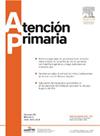对2019冠状病毒病大流行前常见突发事件临时残疾过程的评估(2018 - 2019两年期)
IF 1.8
4区 医学
Q2 MEDICINE, GENERAL & INTERNAL
引用次数: 0
摘要
目的了解员工病假流程特点、病假原因、实际和预计病假时间及相关因素。设计描述性、横断面、回顾性研究。布尔戈斯卫生区卫生中心的设置。参与者:在2018年和2019年进行过SL流程的员工中,通过简单随机抽样选出的活跃员工。主要测量指标:社会人口学变量;与SL相关的原因,估计和观察的持续时间和工作岗位;临床变量:习惯、合并症、多药和共付。结果职工933人,男性52.4%,年龄43.6±11.4岁。观察到的和估计的病程差异最大的是肿瘤、循环系统疾病、精神障碍、神经系统和肌肉骨骼疾病。既往合并症、多药、无共付和55岁有显著差异。31.8%的人要求进行额外检查,3.1%的人在相互保险公司进行了检查;和33.3%的咨询。非技术性工作的SL比例更高,技术性工作的持续时间更长。结论初级保健承担了90%的SL过程的治疗。考虑到卫生系统通常的延误,转到另一级护理机构进行检查或咨询可能会导致更长的休假时间;在互助保险公司进行的测试的百分比很低。这个过程的持续时间包括观察到的和估计到的。最长的劳动时间与最合格的工人以及肌肉骨骼和精神疾病相对应,延迟、合并症和社会职业因素可能有影响。本文章由计算机程序翻译,如有差异,请以英文原文为准。
Evaluación del proceso de incapacidad temporal por contingencias comunes en el periodo prepandemia por COVID-19 (bienio 2018 y 2019)
Objectives
To know the characteristics of the sick leave (SL) process, reasons, actual and estimated duration, and related factors.
Design
Descriptive, cross-sectional, retrospective study.
Setting
Health Centers of Burgos's Health Area.
Participants
Active workers, selected by simple random sampling, among those who had a SL process in 2018 and 2019.
Main measurements
Sociodemographic variables; related to SL reasons, estimated and observed duration and job position; clinical variables: habits, comorbidities, polypharmacy and copayment.
Results
Nine hundred thirty-three workers, 52.4% men, age 43.6 ± 11.4 years. The processes with the greatest difference between observed and estimated duration were neoplasms, circulatory system diseases, mental disorders, nervous system and musculoskeletal disorders. Significant difference for previous comorbidities, polypharmacy, no copayment and >55 years. 31.8% requested additional tests, 3.1% were done in mutual insurance companies; and 33.3% consultations. Higher percentage of SL in unskilled jobs and longer duration in skilled jobs.
Conclusions
Primary care assumed the treatment in >90% of the SL processes. Referral to another level of care for tests or consultations may lead to a longer duration of leave given the usual delays in the health system; the percentage of tests carried out at a mutual insurance company is low. The duration of the process included the observed and estimated. The longest duration of SL corresponds to the most qualified workers and to musculoskeletal and mental disorders, and the delay, comorbidity and socio-occupational factors may have an influence.
求助全文
通过发布文献求助,成功后即可免费获取论文全文。
去求助
来源期刊

Atencion Primaria
医学-医学:内科
CiteScore
2.90
自引率
8.00%
发文量
156
审稿时长
33 days
期刊介绍:
Atención Primaria es una revista que publica trabajos de investigación relativos al ámbito de la atención primaria de salud. Desde el punto de vista conceptual, Atención Primaria asume el nuevo modelo de atención primaria de salud, orientado no sólo a la curación de la enfermedad, sino también a su prevención y a la promoción de la salud, tanto en el plano individual como en el de la familia y la comunidad. En estos nuevos aspectos que definen el modelo de atención primaria de salud es en los que se centran los trabajos de investigación que publica Atención Primaria, la primera revista de originales española creada para recoger y difundir la producción científica realizada desde los centros de atención primaria de salud sobre cuestiones como protocolización de la asistencia, programas de prevención, seguimiento y control de pacientes crónicos, organización y gestión de la asistencia primaria, entre otros.
 求助内容:
求助内容: 应助结果提醒方式:
应助结果提醒方式:


